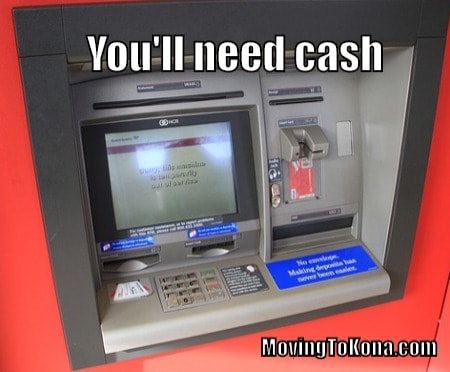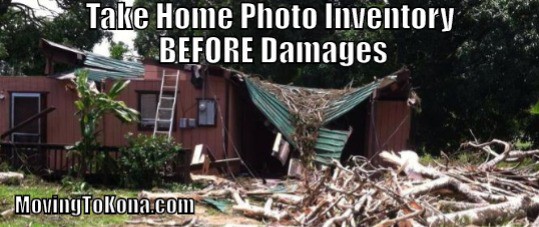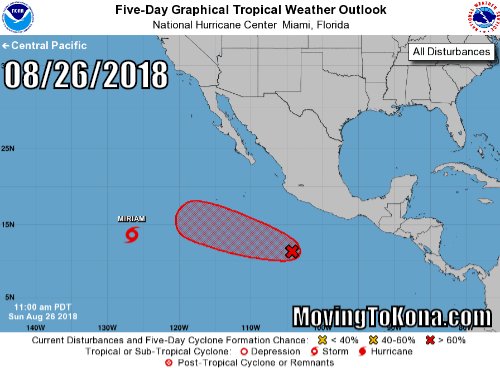Hawaii & Hurricanes: Be Aware and Be Prepared for the Storm
Hawaii & Hurricanes
The following is a discussion about hurricanes and their potential impact on the Hawaiian Islands: what you need to understand, historical information, and geographical, meteorological, oceanographic factors, and more.
While hurricanes do occasionally impact the Hawaiian Islands, such events are relatively rare compared to other regions in the Pacific. Below is an in-depth analysis of the factors contributing to this phenomenon.
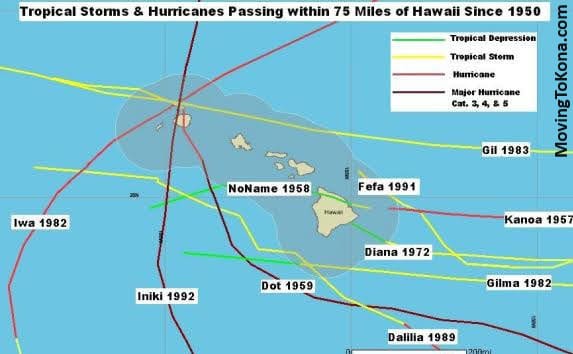
Hawaii’s in the Hurricane Zone—But Not the Bullseye
Hawaii is located in a part of the Pacific where hurricanes can form, but the islands often manage to dodge the worst of them. Thanks to its position in the Central Pacific, Hawaii sits just north of the typical paths that many hurricanes take as they travel westward from the Eastern Pacific. Most hurricanes, fueled by the warm waters near the equator, start their journey closer to Central America and Mexico. By the time they near Hawaii, these storms often take a more northward path, sparing the islands from direct hits.
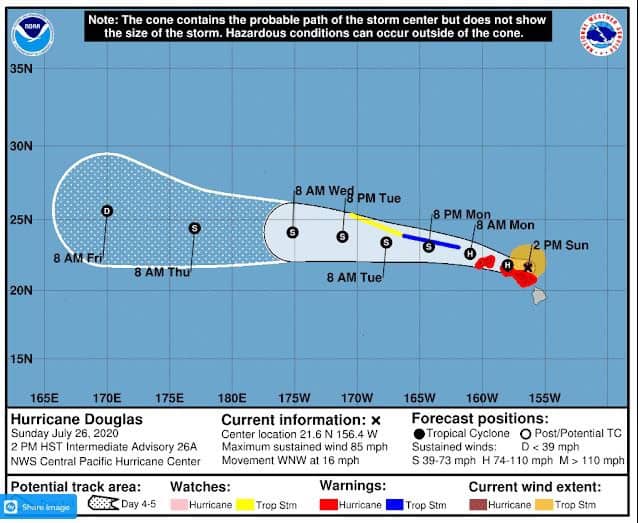
Cooler Waters Keep Hawaii Chilled Out
Hurricanes need warm water to thrive, specifically temperatures above 80°F (26.5°C). The ocean around Hawaii, while warm enough for a swim, is generally cooler than the waters further south where hurricanes gain their strength. As these storms move closer to Hawaii, they encounter this cooler water, which saps their energy and often causes them to weaken. It’s like throwing a wet blanket over a fire—it doesn’t necessarily put it out, but it does take away some of its heat.
The Hawaiian Archipelago’s Current
The North Pacific Gyre circulates cooler water towards the Hawaiian Islands. This cool current further contributes to lower sea surface temperatures, especially on the northern and western sides of the islands, which can act as a deterrent to hurricane development and maintenance.
Wind Shear is the Invisible Force That Messes With Hurricanes
In the atmosphere, wind shear—the change in wind speed and direction at different altitudes—can be a hurricane’s worst enemy. The Central Pacific, where Hawaii is located, often experiences strong wind shear, especially during hurricane season. This shear can literally tear a hurricane apart, disrupting its structure and making it less likely to hit Hawaii as a powerful storm. Think of wind shear as nature’s way of keeping hurricanes in check, making it harder for them to maintain their destructive potential.
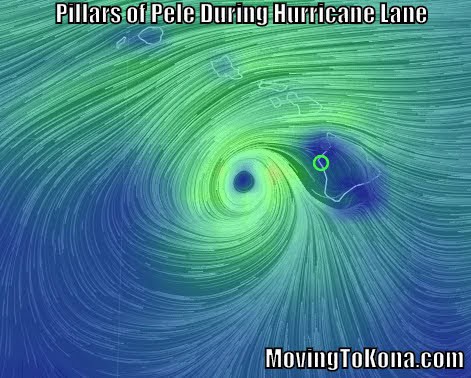
Dry Air Dries Up the Hurricane Strength
Dry air in the Central Pacific is another factor that can weaken hurricanes before they reach Hawaii. Hurricanes feed on moisture, so when dry air gets pulled into the storm, it can choke off its energy supply. This doesn’t mean the storm disappears, but it can certainly make it less dangerous by the time it gets near the islands.
Rain And Kona – Just Why Is Kona So Dry?
Three Pele-grown mountains protect Kona from the prevailing weather pattern, which originates predominantly from the east: Mauna Kea at 13,803 feet, Mauna Loa at 13,679 feet and Hualalai at 8,271 feet. These large mountains form a large rain shadow, protecting Kona from all sides except for weather from the west (and sometimes to the south). Big Island volcanoes ‘generally’ protect Kona via the ‘Kona Rain Shadow.’ These pillars form a rain shadow for Kona. If rain-laden clouds want to pass from the east side of the Big Island to the west side, these clouds have to lighten in order to get over mountains. They do so by releasing rain. This explains why Hilo averages 130″ of rain per year and Kona only has about 18″ of rain per year.
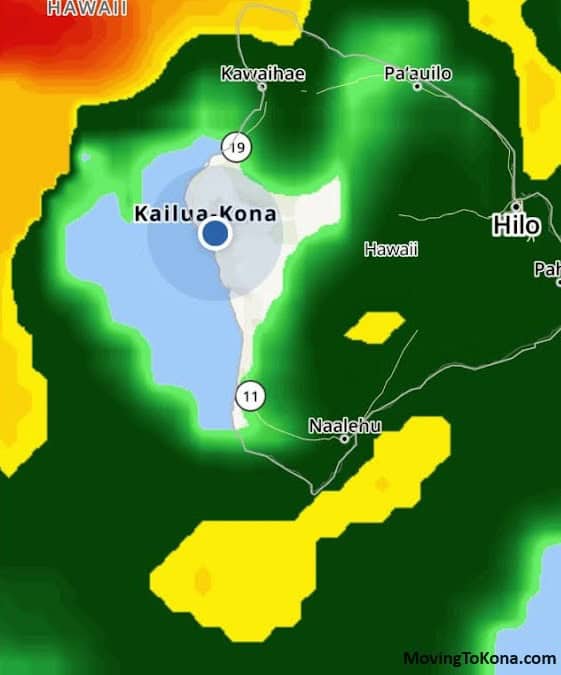
The Pillars Of Pele Might Be Speed Bumps, Not Brick Walls
The Big Island’s towering mountains, like Mauna Kea and Mauna Loa (both over 13,000 feet), are impressive, but they’re not tall enough to act as a shield against hurricanes. These mountains can influence local weather, like causing more rain on one side of the island, but they don’t stop a hurricane in its tracks. Instead, think of them as speed bumps—they might slow down the storm or disrupt its path a bit, but they don’t prevent it from reaching the islands.
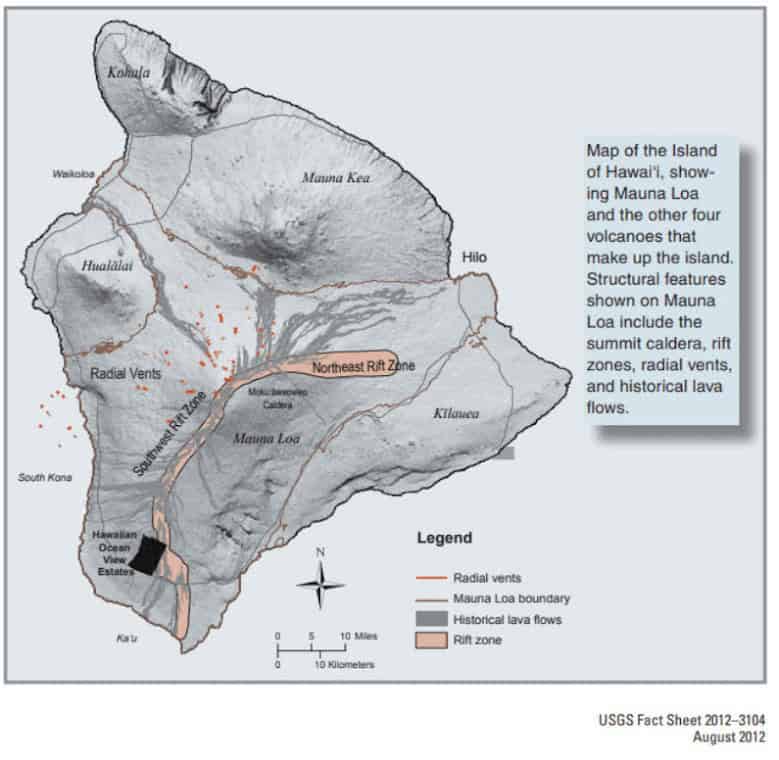
Hurricanes Have Hit, Just Not That Often
Hurricanes do hit Hawaii, just not very often. When they do, the impact can be severe. For instance, Hurricane Iniki in 1992 was a Category 4 storm that caused extensive damage to Kauai, reminding everyone that while Hawaii is often spared, it’s not immune. The rarity of these events is due to all the factors discussed—cooler waters, wind shear, and dry air—working together to protect the islands most of the time.
Historical data shows that Hawaii experiences a direct hit from a hurricane or a tropical storm about once every 10-20 years. When compared to the frequency of hurricane landfalls in places like the southeastern United States or the Caribbean, this is relatively low.
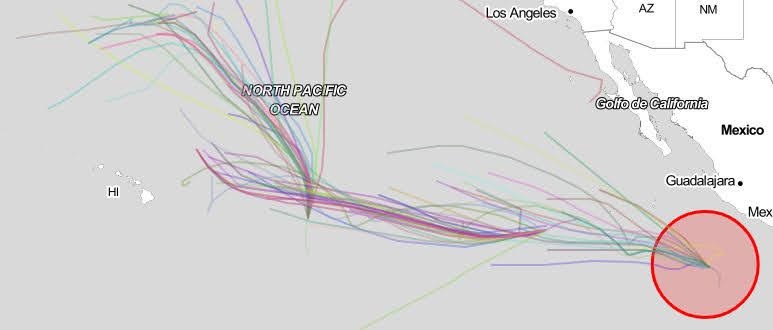
El Niño and La Niña Are Game Changers
Every few years, the weather pattern known as El Niño can change the game. During El Niño years, the Central Pacific warms up, which can make Hawaii more vulnerable to hurricanes. Conversely, La Niña years bring cooler waters and stronger wind shear, which offer more protection. This seesaw effect means that Hawaii’s risk from hurricanes can vary significantly from year to year, depending on these broader climate patterns.
Hawaii’s Hurricane Shield (The Pillars Of Pele) is Real, But Not Impenetrable
In summary, Hawaii benefits from a combination of natural defenses that make direct hurricane impacts rare. However, when the perfect storm of conditions comes together—warmer waters, reduced wind shear, and other factors—the islands can and do experience powerful hurricanes. So while Hawaii isn’t often in the hurricane bullseye, it’s always wise to stay prepared.
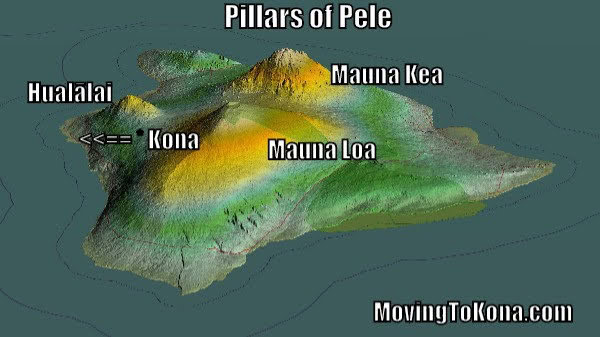
Hurricane Preparedness Safety Tips
The three most important things? Save a list of Hawaii Hurricane Resources to your phone or print it out, get cash and fill your car with gas. The rest of the hurricane preparedness items on this list are important, but first things first!
Hurricane Safety Tip #1 – Plan Ahead. Hawaii will have a fair amount of lead time since we are in the middle of the Pacific Ocean. Keep an eye on weather forecasts. Visit Hawaii Hurricane Resources for a list of weather sources, governmental agencies and more.
Have a Facebook Crisis Plan to contact family members.
Be sure to share this helpful information on (click to mail) Hawaii Hurricane Resources with your family members and friends.
Hurricane Safety Tip #2 – Get money. Money, money, money. No, I’m not suggesting that your career path takes a u-turn towards looting, but do remember to hit the ATM machine before a hurricane hits you. Who knows how long they will be out of action if a tropical storm hits the power supply, and although the best things in life are free, you still don’t get far without cash in your pocket.
Remember when the power goes out, ATM machines won’t work. Don’t just get cash, get plenty of one dollar and five dollar bills as not many people will have change for twenty or higher bills.
Hurricane Safety Tip #3 – Fill your gas tank. When the power goes out, gas pumps won’t work. Buy extra gas storage cans from Amazon (you should have enough lead time) or your local hardware store.
Three Bonus Aloha Tips – The Most Overlooked Hurricane Prep Items:
“Vices are simply the errors which a man makes in his search after his own happiness.”
Lysander Spooner
Bonus Aloha Tip #1: Buy Your Vices – Stock up on your vices. If you like to smoke, enjoy a beer or glass of wine or a chocolate bar, buy a week’s worth at least. Nobody likes the stress of a hurricane and an irritable partner combined into even a worse storm.
A dog is the only thing on earth that loves you more than you love yourself.
Josh Billings
Time spent with cats is never wasted.
Sigmund Freud
Bonus Aloha Tip #2: Pet Food – Stock up on pet food because your loving critters will hate you if they have to go without eating. Buy extra, you will ultimately use it.
Bonus Aloha Tip #3: Photo Inventory Your Home – List your valuables. I know, I know, this is one of those types of jobs which is always on the “to do” list but never actually makes it onto the “done” list, but if you have an inventory of your valuables and possessions you are likely to be able to claim up to 20% more insurance than if you don’t. Think about it, even people who are financially secure cannot really afford to replace all of their worldly possessions. If your home is hit by a hurricane and you lose your possessions and valuables, you’re bound to forget all about some of the items you have lost. Go on, make that list, you know it makes sense.
Extra Bonus Aloha Tip – Use your smartphone camera or video to take pictures of everything in your home. A home safety deposit box can protect your valuable papers. Yeah, hard to believe, but this AmazonBasics safe will ship for free to Hawaii.
Is A Hurricane Approaching Hawaii? Visit NOAA’s National Hurricane Center – Eastern Pacific site for the latest news and 5-day forecast. Even though the graphic below says 8/26/18, when you click on it, you will always go to the latest tropical weather forecast page at NOAA.
Mahalo for ‘Liking’ our Moving To Kona Facebook page.
Hurricane Safety Tip #4 – Charge your cell phone. Keep a spare charging cable to use in your car.
Three (+1) Hurricane Safety Items To Purchase – Have these critical necessities (all the below are Amazon’s top 5* rated items):
-
-
- First Aid Kits For $20 you can have medical supply basics, all in one place, ready to – it is worth it for you and your family.
- Solar Cell Phone Charger Solar powered charges start in the mid $20 range and go up from there. The best selling Amazon solar charger is $60 and is fast with ‘Industrial-strength PET polymer faced solar panels sewn into a rugged polyester canvas offer weather-resistant outdoor durability.’ Both are presented below. Not all companies will ship to Hawaii.
- Crank Powered Radio You can pay upwards of $100 for a decent unit. The best selling Amazon crank radio is just $20.
- Emergency Water Filter No need for a super fancy system. The LifeStraw Personal Water Filter has 5,000 reviews and is $20.
Be sure to share this helpful information on Hawaii Hurricane Resources with your family members and friends.
-
![]() Mahalo for ‘Liking’
Mahalo for ‘Liking’
Moving To Kona Facebook
Hurricane Safety Tip #5 – Outside your home: The obvious items are anything that can blow away. If you can’t store them safely in a garage and you have a pool, just throw the patio furniture into the pool. If you have to use rope to securely tie down items, make sure you tie your items to something secure and not in the direct path of any damaging winds.
If you have a satellite dish, make sure it is secure or protected from the wind. Be sure not to move the satellite dish angle as you will lose reception if it is even off by a couple of degrees.
Kona And The Pillars Of Pele? Just why did Hilo and the eastern portion of the Big Island receive so much devastating rain during Hurricane Lane, while Kona had less than an inch and no winds?
Hurricane Safety Tip #6 – Make yourself scarce, go on, beat it. See where the hurricane path is going and then get out of the way before the hurricane hits. Generally, you can go to another side of a Hawaiian Island. Either move in with the relatives for a few days, failing that (or if there are only the in-laws available and it’s gonna be a bit squashed) then book into a motel, hotel or somewhere else which is outside of the hurricane danger zone. It’s not brave and it’s not clever to try and out-smart a hurricane storm in your high rise condo.
Hurricane Safety Tip #7 – Three (+1) Hurricane Safety Items To Purchase – Have these critical necessities (all the below are Amazon’s top 5* rated items):
-
-
- First Aid Kits For $20 you can have medical supply basics, all in one place, ready to – it is worth it for you and your family.
- Solar Cell Phone Charger Solar powered charges start in the mid $20 range and go up from there. The best selling Amazon solar charger is $60 and is fast with ‘Industrial-strength PET polymer faced solar panels sewn into a rugged polyester canvas offer weather-resistant outdoor durability.’ Both are presented below. Not all companies will ship to Hawaii.
- Aloha Tip – You don’t have to be a teenager to recognize that your cell phone is your most essential safety device. If the power goes out, it won’t be long before your phone dies. Buy one now.
- Crank Powered Radio You can pay upwards of $100 for a decent unit. The best selling Amazon crank radio is just $20.
- Emergency Water Filter No need for a super fancy system. The LifeStraw Personal Water Filter has 5,000 reviews and is $20.
-
Be sure to share this helpful information on (click to mail) Hawaii Hurricane Resources with your family members and friends.
Hurricane Safety Tip #8 – Have your bags packed and ready… just a few necessities can make all of the difference, a bag for each member of the family with a few essentials . . . pajamas, toiletries etc, in case you have to move out for the night in a hurry.
Hurricane Safety Tip #9- If you evacuate turn off all utilities, including electric, gas, and water, to your home.
Hurricane Safety Tip #10 – An old backpack filled with essentials does the trick. Have it packed and ‘ready to go’ – your go bag. PS a little bit of toilet paper goes a long way…
Hurricane Safety Tip #11 – Make sure that you have plenty of prescription medicines on hand. If you’re hit by a tropical storm which cuts out the power, the last thing you need to worry about is a medical emergency. Make sure that you have extra prescription medication containers available in plenty of time before the hurricane season is upon you.
Hurricane Safety Tip #12 – Keep all special papers and photographs in a watertight container or plastic bag. You know, all of those important things like bank account papers, birth certificates, property deeds, medical cards, social security cards . . . as well as photos and important keepsakes which can never be replaced – they could all be ruined and washed away forever in one whoosh!
Hurricane Safety Tip #13 – Make sure that you’ve got plenty of non-perishable food in hand. Even though your town might make provision for emergency hurricane supplies, it’s really down to you to make sure that your family and yourself have got plenty of food and drinking water available. Fill up some large plastic containers with water and pop them in the freezer in good time, that way you’ll have a supply of fresh, cold drinking water which will help to keep the rest of your supplies cold . . . good thinking eh? It’s a good idea to have canned foodstuffs (don’t forget the opener) as well as stuff like cereals and energy bars. You can order 5* emergency food from Amazon.
Hurricane Safety Tip #14 – Fix up the hurricane shutters . . . what hurricane shutters? Well, if you don’t have any hurricane shutters it could be a little late to sort that out for this season, but don’t leave it too late for next year . . . anyway, meantime you can board up your windows with plywood, it really can help. Accordion hurricane shutters work really well, why not have some fitted by the experts before you might need them.
Worst case have super strong duct tape (you will need at least a 3-pack). Don’t buy a ‘cheap’ tape, it will just come off. Have plastic sheeting available (Water resistant, plastic sheeting works great for protecting stuff from a leaky roof).
Hurricane Safety Tip #15 – Flashlight batteries – check! Cell phone batteries – check! Radio batteries – check! Yes, check all of the batteries in case you might need them . . . it’s not much fun being stuck in a place with no electricity, no light and no means of contacting the outside world, or indeed, knowing what’s going on.
Hurricane Safety Tip #16 – Make sure that all of your family knows about your emergency hurricane plan, escape routes, points of call etc, and what to do in case of a hurricane emergency. You can, for example, print out your Google contact list. and here is information on the Apple address book.
Hurricane Safety Tip #17 – tents, sleeping bags, camping equipment. Okay, this might not be the ideal accommodation to think about during hurricane season, but think about it for a minute. What if you’re out of the hurricane danger zone but haven’t quite made it to your alternative accommodation, although emergency shelters are sometimes available, it’s really a much better idea to make sure that you’ve got all of that stuff sorted out for yourself. Sleeping in a sleeping bag on the floor might not be ideal, but it sure beats sleeping on the floor without a sleeping bag.
Hurricane Safety Tip #18 – Have hurricane insurance before the hurricane. Also check your homeowners’ policy to see if you are covered for flooding, as flood coverage is almost always an add-on coverage. Order flood insurance now as insurers won’t issue coverage with an impending storm approaching.
Aloha Tip – When we asked our insurance agent about hurricane insurance, she said, “Once a home is paid off and no longer is required by the lender to have the insurance, many customers cancel this coverage. They feel that the mountains to our east will protect Kona. That isn’t always true, depending on the hurricane approach direction.”
Aloha Tip – Read How Often Do Hurricanes Hit Hawaii? What Is The History Of Hurricanes Hitting Hawai’i?
Aloha Tip – Read Kona And The Pillars Of Pele? Record Rain in Hilo – But No Rain in Kona. Just why did Hilo and the eastern portion of the Big Island receive so much rain, while Kona had less than an inch and no winds?
Mahalo for ‘Liking’ our Moving To Kona Facebook page.
Hurricane Safety Tip #19 – Don’t forget the pets . . . it’s important to keep your family and your property safe, but don’t forget about your pets. Many hotels and motels won’t accommodate your pets too, so if that’s your plan then you’ll need to find them a safe boarding kennel or cattery which is outside of the hurricane danger zone. Also, always keep extra food on hand, pet food may be hard to find or buy during an extended storm and related power outage.
Amazon will ship dog pet food and cat food to your door. Why should you do this? Because all the local grocery stores will sell out of pet food.
Hurricane Safety Tip #20 – Be sure to use the Facebook Safety Check feature. You can watch a brief video below.
Introducing Safety Check from Facebook
Hurricane Safety Tip #21 – Kitchen preparation: Freeze water in sealed plastic bags (not full to allow ice to expand) and have your freezer full (a fully loaded freezer stays colder longer. Before the storm hits, move the foods you are most likely to use to the front of the frig so you don’t have to keep the door open for long when power is out. If you like ground coffee from whole beans, grind them before the power goes out (and have tea bags available).
Hurricane Safety Tip #22 – Vices: Be sure to stock up on things you like such as; alcohol, cigarettes, chocolate, etc. They may not be available for a while if you have a prolonged electrical outage.
![]() Mahalo for ‘Liking’
Mahalo for ‘Liking’
Moving To Kona Facebook
Hurricane Safety Tip #23 – Entertainment: Recharge your Kindle and download books, get books for family members, have some board games available and similar strategies.
Hurricane Safety Tip #24 – ‘Bubble-wrap’ your home: When you ship something fragile you use bubble wrap to protect it. Consider this same strategy for your home.
Hurricane Storm Shutters: Storm shutters can be expensive but they protect your windows and sliding glass doors. Note that these often have a longer lead time for shipping to Hawaii.
Hurricane Clips: Hurricane clips are just metal brackets. Hurricane clips attache to various points in your framed home. They provided a rigidity to the overall structural integrity of your home.
Precut Lumber To Board Your Home: When the hurricane is a few days away, there is a massive run on lumber and plywood from your local store. You will be lucky to get all you need, then even luckier if what you bought ‘fits’ your windows and doors. If you are committed to using this method, buy now, cut to fit, paint to protect your wood for the long-term and consider how you are going to securely store your protective lumber from termites and sudden windstorms (before you can get the boards into place).
Mahalo for ‘Liking’ our Moving To Kona Facebook page.
Here is a simple video showing how hurricane ties work.
Family Hurricane Safety Kit Checklist
- Flashlight (with extra batteries)
- Amazon’s Top Rated First Aid Kits
- Bottled water – a minimum of 3 gallons for each and every person
- Battery powered radio – how else you gonna’ know what’s going on?
- Battery powered lantern – how else you gonna’ see what you’re doing in a power outage?
- First aid kit
- A form of ID (and I don’t mean a mirror . . . yet, that’s me)
- Lots of canned food, plus a can opener (nonelectric of course)
- High energy foods like jelly, crackers and peanut butter
- Utility knife, pliers, shut off wrench and other basic tools
- Compass
- Tape
- Personal items – including soap, toothbrush etc
- Pencils and paper
- Pet food (only important if you have a pet)
- Rain Gear and other protective clothing
- Change of clothes, bedding, sleeping bag etc
- Plastic garbage bags (don’t forget the ties)
And pop these things into a waterproof container (and then take them with you)
- Insurance policies
- Birth certificates
- Marriage certificates (only important if you are actually married)
- Proof of residence might be a deed or a lease depending on whether you own or rent your property
- Deeds, wills, copies of any recent tax returns etc
- Drivers license
- Social security card
Now take pictures of everything you own. Now – upload your pictures to the cloud – Dropbox, Microsoft Cloud, iCloud, Google Drive, etc., – before the storm
